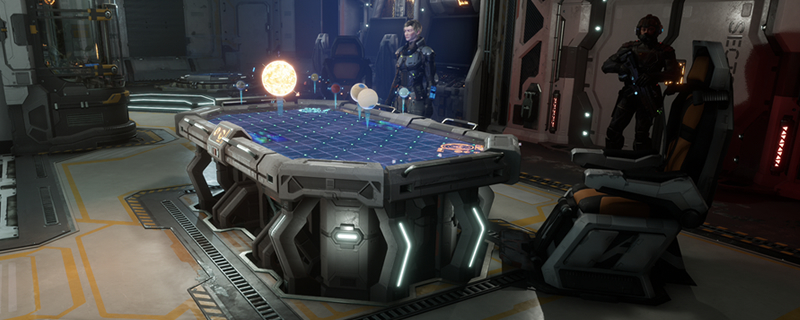MechWarrior 5: Mercenaries – RTX Beta Analysis
MechWarrior 5: Mercenaries – RTX Beta Analysis
In this article, we will be looking into the graphics and performance impacts of raytracing within MechWarrior 5: Mercenaries, and judging whether or not raytracing is a worthwhile addition to the game at this time. As mentioned before, MechWarrior 5’s DXR support is currently in beta, which means that there is plenty of room for improvement, both quality and performance-wise, with future versions of MechWarrior 5.Â
Raytraced Reflections
Most reflections in modern PC games are generated using “Screen Space” techniques, which use already rendered aspects of a scene to create accurate reflections.Â
The problem with Screen Space techniques is that they rely on screen-space data, which means that reflections can break or disappear whenever reflected objects are blocked from view or removed from a game’s screen space. Look at screen space reflections in a game and then force your character to look down slowly. You should see reflections break and disappear at a certain point, highlighting a flaw in this often-used technique.Â
Raytraced Reflections use ray tracing to create accurate reflections using simulated light, which can be reflected off surfaces and onto the objects that a game should be reflecting, even if they sit outside of screen-space. This allows reflections to be rendered without fear of inaccuracy or “breaking” under specific conditions.Â
Below, you can see how ray tracing impacts the Hanger in MechWarrior 5, with the reflections on the puddles and glass surfaces highlighting the game’s use of ray-traced reflections.Â
 Â
(See Full-Sized Comparison)Â Â
 Â
Raytraced Shadows
Like Raytraced Reflections, Raytraced Shadows use simulated light to increase the accuracy of in-game shadow generation. Raytraced Shadows can also accurately simulate contact shadows and soft shadows, unlike most rasterised shadow casing techniques.Â
Below, we can see raytraced shadows casting shadows from more objects, such as the chair beside the command table, and we can see that practically all shadows in this scene become more diffuse. These diffused shadows are due to the nature of this scene’s lighting, coming from area lights and not point lights.Â
The problem with raytraced shadows is that it lacks the wow factor of raytraced reflections and raytraced global illumination techniques, as many already consider the shadows in today’s games to be “good enough”.Â
(See Full-Sized Comparison)Â Â
 Â
In Battle
The problem with MechWarrior 5’s current implementation fo raytracing, is that it doesn’t have a huge graphical impact on the title in missions. Yes, lighting is more accurate, but the comparison below showcases barely any graphical difference, which is a big deal given the performance cost of raytracing in MechWarrior 5.Â
As we said before, Mechwarrior 5: Mercenaries currently supports DXR raytracing in beta, which means that the game’s visuals and performance and likely to improve over time with future updates. Â



